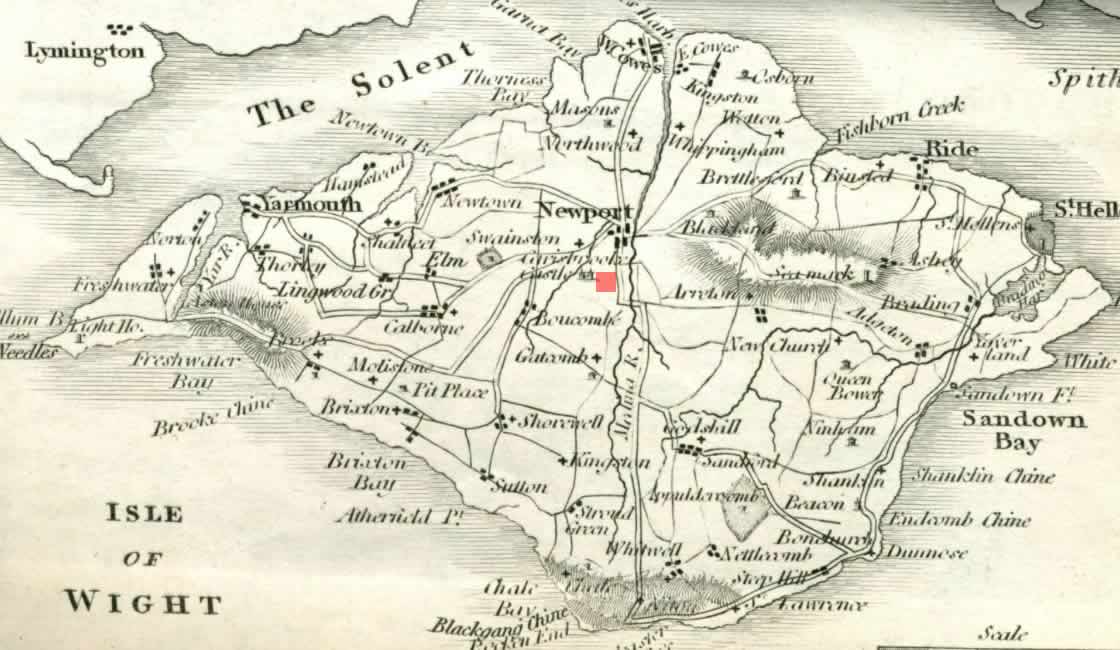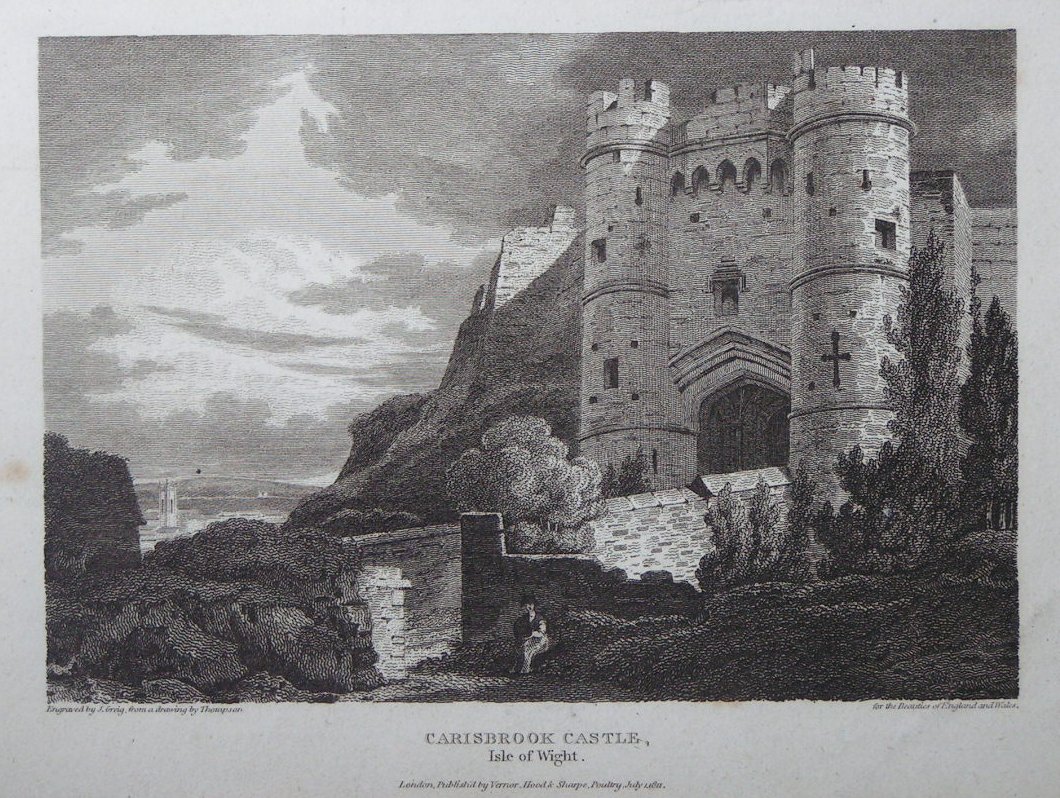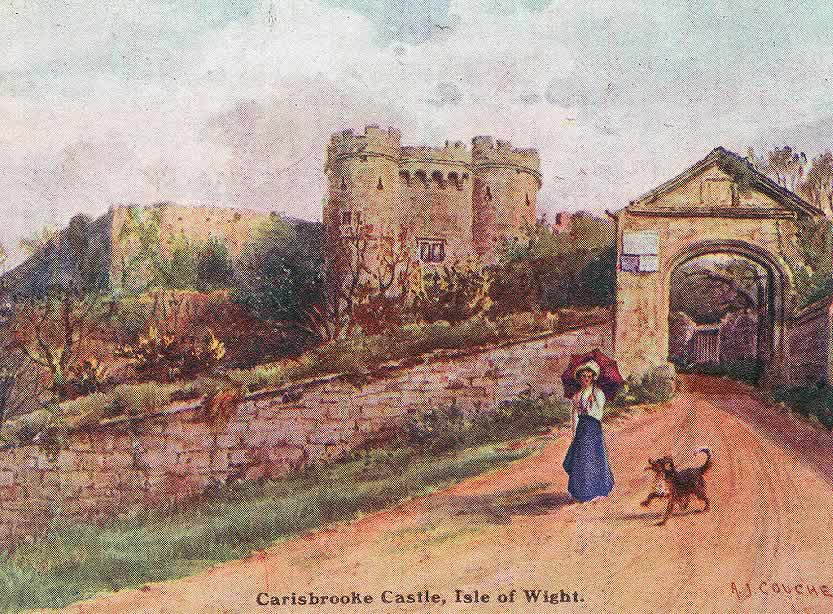16-23 April 1817: Endymion, On the Sea,
& Eternal
Poetry: Picturing Young Keats on the Isle of Wight
Shanklin and Carisbrooke, Isle of Wight


Via Southampton (on 15 April), Keats is on the Isle of Wight. He arrives at Cowes and then goes to Newport, where he spends the night. He goes to the small village of Shanklin (population about 150). Margate, he finds, is beautiful, but too pricey to stay. Once purely a fishing village, Margate has begun to turn toward being a tourist destination. Keats then moves on to stay inland, at Carisbrooke, for a week (he arrives 17 April).
While on the island, Keats thinks so much about poetry—about being a poet—that he cannot sleep. But in truth, the solitude that Keats seeks by visiting the island quickly translates into loneliness, and after about a week he leaves the island and settles inland at Margate, where his younger brother Tom joins him.
But now: in motivating himself for the daunting task of writing about 4,000 lines on the Endymion myth (gleaned mainly from a classical dictionary), Keats writes to fellow poet and good friend John Hamilton Reynolds about how he has surrounded himself with inspirational material—including the landscape as well as pictures of Milton and Shakespeare, books (including seven volumes of Shakespeare, whose birthday is in a week). Keats writes that he can see Carisbrooke Castle from his window (letters, 17 April). Keats is doubly motivated, since earlier this month he has the assurance from a publisher—Taylor & Hessey—that they will take on his future work.
![Carisbrook[e] Castle, Isle of Wight, 1811. Click to enlarge. Carisbrook[e] Castle, Isle of Wight, 1811. Click to enlarge.](images/carisbrookCastle1811.jpg)

So here we have a picture of young Keats, aged twenty-one: there he sits—impatient, holding his pen, literally looking for inspiration, ready to begin this long, uncertain project. It is a touching scene, in a way. In fact, the situation of a young poet looking for inspiration and confronting imaginative capabilities works itself into Endymion’s blurred, embowered allegory about the pursuit of the ideal. In this way, Endymion is on one level about Keats’s sensualized quest for not just the ideal, but for the poetic ideal—for inspired, enduring, beautiful poetry, for a capable imagination—in the moment of writing Endymion.
Keats purposefully believes that a long poem will, in effect, prove his poetic worth—not
to
mention his determination to take on the mantle of poet. While waiting for creativity
to lift
him, he sends Reynolds an indifferent but
enthusiastic sonnet—On the
Sea—that includes the incapacitated line, O ye who have your eyeballs vext and
tir’d / Feast them on the wideness of the Sea [. . .]
(letters, 17, 18 April 1817). That
the poem is inspired by a line from King Lear does not raise
its quality, but perhaps more importantly we begin to get the sense that, for Keats,
Shakespeare has to become not just a figure to venerate, but one to emulate.
Keats begins his trip full of strong encouragement from another friend, the well-known
historical painter Benjamin Robert Haydon.
Haydon is impressed—touched, even—that Keats (like him) is so conscious of a higher
calling.
Keats reports that Haydon has told him that it is necessary that he should be alone to
improve myself
(reported to Reynolds, 9
March 1817). Keats also begins his trip feeling he needs to find his way without the
influence
of others—by this, he mainly means his London circle of friends, and perhaps most
significantly, Leigh Hunt. In a few weeks, Keats
will in fact condemn Hunt’s great sin of deluding himself that he is a great poet
(letters, 11
May).
Importantly, Keats makes a strong and precarious declaration of purpose to Reynolds: I find that I cannot exist without poetry—without
eternal poetry—half the day will not do—the whole of it—[. . .],
while also citing lines
from Spenser about how great intent, / Can
never rest
until it creates something great and eternal (letters, 18 April). For Keats,
his life is, as it were, on the line—the line of poetry.
On 8 May, Haydon writes to Keats in Margate.
Haydon passionately encourages him: God bless you My dear Keats go on, don’t despair,
collect incidents, study characters, read Shakespeare and trust in Providence.
A good part of this is sound advice: in
reading and in deliberately studying Shakespeare, Milton, and Wordsworth in particular, Keats will make
significant progress, especially in understanding the qualities of great poetry—the
poetic
character. He comes to a point where he can make particularized critical judgments
about the
value and significance of respective writers and their work.
Such focused study also weans him away from easier, incidental subjects as well as
from a
tone that at moments too openly aims to entertain and to encourage sociability, rather
than
strive for deeper, artful, and timeless subjects. But Keats writes back to Haydon
that he is
distracted by a few things, including (and as usual) Money Troubles.
He also
experiences a bout of what he calls a horrid Morbidity of Temperament
that shows up at
intervals—what we today might call nervous anxiety or mild depression (letters, 11
May). This
comes and goes during his adult life, but it is likely more a dispositional or character
trait
than a medicalized condition to be pathologized. At any rate, moving forward with
Endymion does not at
this point come easily, though overall his determination and pacing is admirable.
Using his
own guiding terms of reference for his project, he does indeed manage to take one
bare
circumstance and fill it with poetry—4,050 lines, to be exact. But no one said it
had to be
great poetry, least alone Keats; it just has to be done, learned from, and left behind.
In the end, then, Keats comes to hold an ambivalent attitude toward his long, pastoral
romance. While he sees it necessary as a sustained gesture of dedication, endurance,
resourceful imagination, and independence, on another level he recognizes that it
is in some
ways an ill-considered work—a failure he would be happy to rewrite or, better yet,
unwrite.
In the Preface
he eventually writes for the poem almost a year after beginning it, he pleads for
critical
lenience in judging the poem’s literary worth, while regretfully drawing attention
to how the
poem signals great inexperience, immaturity, and every error denoting a feverish attempt,
rather than a deed accomplished.
Keats is all too right. And while his humility and
critical self-awareness is admirable, it also exposes him and his work to criticism
from
certain influential reviewing quarters. A possible translation of the preface: This is the
work of a young, inexperienced poet, so please take it easy on me. I may come back
to Greek
myth for inspiration, but by then I hope I will be a more capable, developed poet. In
fact, Keats does come back to myth at a later stage in his writing—via the Hyperion
story—but
in a style that starkly shows a remarkable development in his poetry.
Two years later, from late June 1819 until the second week of August, Keats returns to the Isle of Wight, and is in very different circumstances: Tom is dead, the poem he is preparing to begin now April 1817 has been published (in 1818), he is not alone, and he has some immediate writing prospects in co-authoring a play; but though he doesn’t know it, almost all of his best poetry, written earlier in 1819, is behind him. He will also have met, and fallen in love with, a certain Fanny Brawne.


